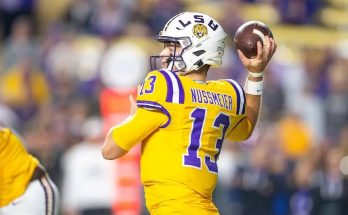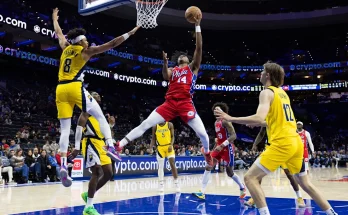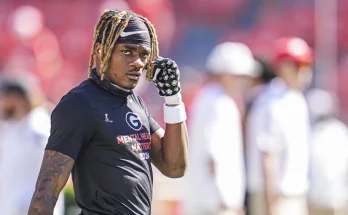Victor Cruz, an electrifying wide receiver who became a household name with the New York Giants, made waves in the NFL for his dynamic playmaking ability and unique personality. Cruz’s time in the NFL was marked by highs and lows, particularly with his tenure with the New York Giants, where he made a lasting impact, and a much shorter, less impactful stint with the Chicago Bears. These two experiences gave Cruz a fascinating perspective on the contrast in team culture, organization, and individual roles in the NFL. In this article, we’ll dive into Cruz’s contrasting experiences with the two franchises, shedding light on his career trajectory, the highs and lows, and the lessons learned along the way.
The Rise of Victor Cruz with the New York Giants
Victor Cruz’s journey to the NFL was not a traditional one. Born and raised in Paterson, New Jersey, Cruz overcame many obstacles, including a tumultuous college career and limited opportunities at the professional level. After going undrafted in the 2010 NFL Draft, Cruz was signed by the New York Giants as a free agent. His first few seasons were marked by limited involvement, but he truly made his mark in 2011, a year that would go down in history as a defining moment in both his career and the Giants’ franchise.
Cruz’s breakout moment came in Week 3 of the 2011 season, when he caught three passes for 110 yards and two touchdowns against the Philadelphia Eagles. The highlight of that game was his iconic 74-yard touchdown reception, which launched him into the NFL spotlight. His ability to make defenders miss, paired with his impressive speed and agility, quickly made him one of the most exciting wide receivers in the league.
Cruz’s success in 2011 was no fluke, as he finished the season with 82 receptions, 1,536 yards, and nine touchdowns, all of which were career highs. His sensational season helped propel the Giants to the Super Bowl, where they defeated the New England Patriots in a thrilling 21-17 victory. Cruz’s role in the Giants’ championship run solidified his status as one of the top receivers in the league.
One of the most memorable aspects of Cruz’s time in New York was his salsa dance celebration. After every touchdown, Cruz would break into his signature salsa dance, a nod to his Puerto Rican heritage. His salsa dance quickly became a fan favorite, and it added an element of fun and personality to his game that endeared him to the Giants’ faithful. Cruz’s charm and charisma off the field also made him a beloved figure in New York, contributing to his popularity and the growth of his personal brand.
However, despite his early success, Cruz’s career with the Giants began to take a downturn after 2011. The team’s struggles with consistency on offense, coupled with injuries to Cruz, limited his ability to replicate his early career production. In 2014, Cruz suffered a torn patellar tendon in his right knee, an injury that kept him sidelined for the majority of the season and affected his performance in subsequent years. Cruz’s production dipped significantly after that injury, and while he continued to be a key figure in the Giants’ offense, he was never quite able to return to his 2011 form.
The Transition to the Chicago Bears
After seven seasons with the Giants, Cruz was released in 2017. The decision to part ways with Cruz was a difficult one for both the player and the franchise, but it was ultimately a necessary move due to the team’s changing needs and Cruz’s inability to recapture his pre-injury form. Cruz’s release opened the door for him to explore other opportunities, and it wasn’t long before he signed a one-year deal with the Chicago Bears in 2017.
However, Cruz’s time with the Bears was short-lived and far less impactful than his years in New York. Cruz’s stint with the Bears in 2017 was marred by injuries, limited playing time, and a struggle to find chemistry with the team’s offense. While he was still a seasoned veteran, Cruz was no longer the electrifying receiver he once was. The Bears, who were in the midst of rebuilding under head coach John Fox, had a young quarterback in Mitchell Trubisky and were focused on developing their offense for the future.
Cruz’s role with the Bears was far different from what it had been in New York. In Chicago, he was relegated to a supporting role, with much of the focus shifting to younger players such as wide receiver Kendall Wright and tight end Zach Miller. Cruz struggled to make an impact, and he often found himself as a backup option behind other receivers. His inability to carve out a prominent role in the Bears’ offense was a stark contrast to his time with the Giants, where he was a key contributor and a fan favorite.
The 2017 season with the Bears was marked by frustration for Cruz. His limited role in the offense, combined with the team’s struggles on the field, made it difficult for him to regain the form that had once made him one of the NFL’s top playmakers. Cruz played in just 14 games for the Bears and finished the season with a modest 23 receptions for 243 yards and a touchdown. While those numbers were not bad by any means, they were a far cry from the explosive performances Cruz had become known for in New York.
Contrasting Team Cultures: Giants vs. Bears
One of the most glaring differences between Cruz’s two NFL tenures was the culture of the two organizations. The New York Giants, with their storied history and legacy of success, represented a winning environment where Cruz could thrive. The team’s stable leadership, both on and off the field, helped foster a sense of camaraderie and professionalism that Cruz benefitted from during his time with the team. Under head coach Tom Coughlin, the Giants had a culture of discipline and hard work, and this environment allowed Cruz to grow as both a player and a person. The team’s success during his early years, culminating in a Super Bowl victory, gave Cruz the platform to showcase his talents and cement his place in NFL history.
In contrast, the Chicago Bears were in a much different place during Cruz’s brief tenure with the team. The Bears were in the midst of a rebuilding phase, and the focus was primarily on developing young talent. The team’s offense, led by rookie quarterback Mitchell Trubisky, was still finding its identity. The lack of stability and direction within the organization made it challenging for Cruz to make an impact. The Bears were also dealing with internal struggles, including a coaching change from John Fox to Matt Nagy in 2018, which further contributed to the team’s lack of cohesion during Cruz’s time there.
Cruz himself acknowledged the difference in culture between the two organizations. In an interview after his time with the Bears, he spoke about how the Giants had a strong sense of tradition and leadership, which made it easier for him to focus on football and perform at his best. Conversely, the Bears’ culture was still in flux, and Cruz found it difficult to get into a rhythm with the team. The lack of stability and clarity in the Bears’ offense made it difficult for Cruz to make the kind of impact he had been accustomed to in New York.
The Personal Side: Transitioning from Superstar to Veteran Mentor
Another contrast between Cruz’s time with the Giants and the Bears was the role he played within each team. With the Giants, Cruz was a star player, a primary weapon in the offense, and a leader both on and off the field. His role as a team leader was particularly important during the Giants’ Super Bowl runs, where his ability to inspire and motivate his teammates was invaluable. Cruz was not only known for his flashy plays on the field but also for his work ethic, humility, and positive attitude, which made him a respected figure within the locker room.
In Chicago, however, Cruz was no longer the focal point of the offense. He was more of a veteran presence who was there to mentor the younger players and offer guidance when needed. Cruz’s shift from a star player to a veteran mentor was a humbling experience, but it also allowed him to reflect on his career and the impact he had on the next generation of players. While his role on the field was limited, Cruz took pride in helping the Bears’ young receivers, sharing his experiences and knowledge with them to help them grow as players.
Despite his reduced role, Cruz was always professional and committed to doing whatever he could to help the team succeed. His attitude and work ethic remained top-notch, and he continued to bring the same level of enthusiasm to practice and meetings as he had in his prime. Cruz’s experience with the Bears reinforced the importance of mentorship and leadership, particularly for veteran players who can provide valuable guidance to younger teammates.
The Legacy: Cruz’s Impact on Both Teams
While Cruz’s time with the Chicago Bears was relatively brief and underwhelming in comparison to his time with the New York Giants, it was not without its significance. Cruz’s legacy in the NFL is largely defined by his time with the Giants, where he was an instrumental part of a Super Bowl-winning team and a beloved figure in New York sports culture. His salsa dance celebration, his clutch performances in key moments, and his overall contributions to the Giants’ success will forever be etched in the memories of fans and teammates alike.
In contrast, Cruz’s time with the Bears was more about transitioning to a new phase in his career. While he didn’t have the same level of success or recognition in Chicago, his brief stint there allowed him to pass the torch to the next generation of players and serve as a mentor. In many ways, his experience with the Bears was a reminder that every player’s career has a lifespan, and that transition from star to mentor is an inevitable part of professional sports.
Victor Cruz’s contrasting tenures with the New York Giants and Chicago Bears highlight the different stages of an NFL player’s career. His time with the Giants was marked by stardom, championships, and personal growth, while his time with the Bears was about adjustment, mentorship, and the challenges of playing in the latter years of his career. Ultimately, Cruz’s journey through both teams illustrates the highs and lows that come with being an NFL player and the importance of adaptability in an ever-evolving league.



